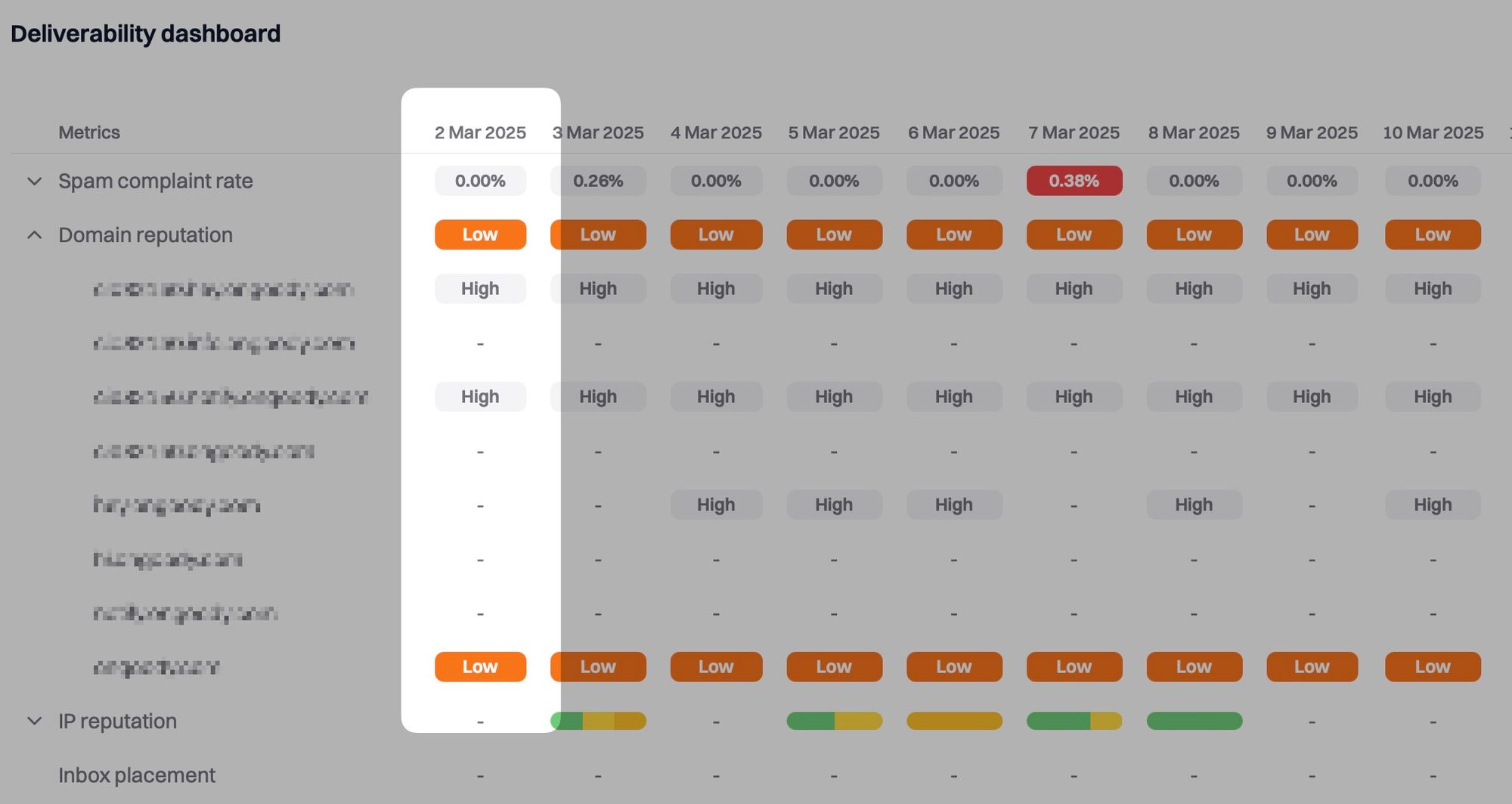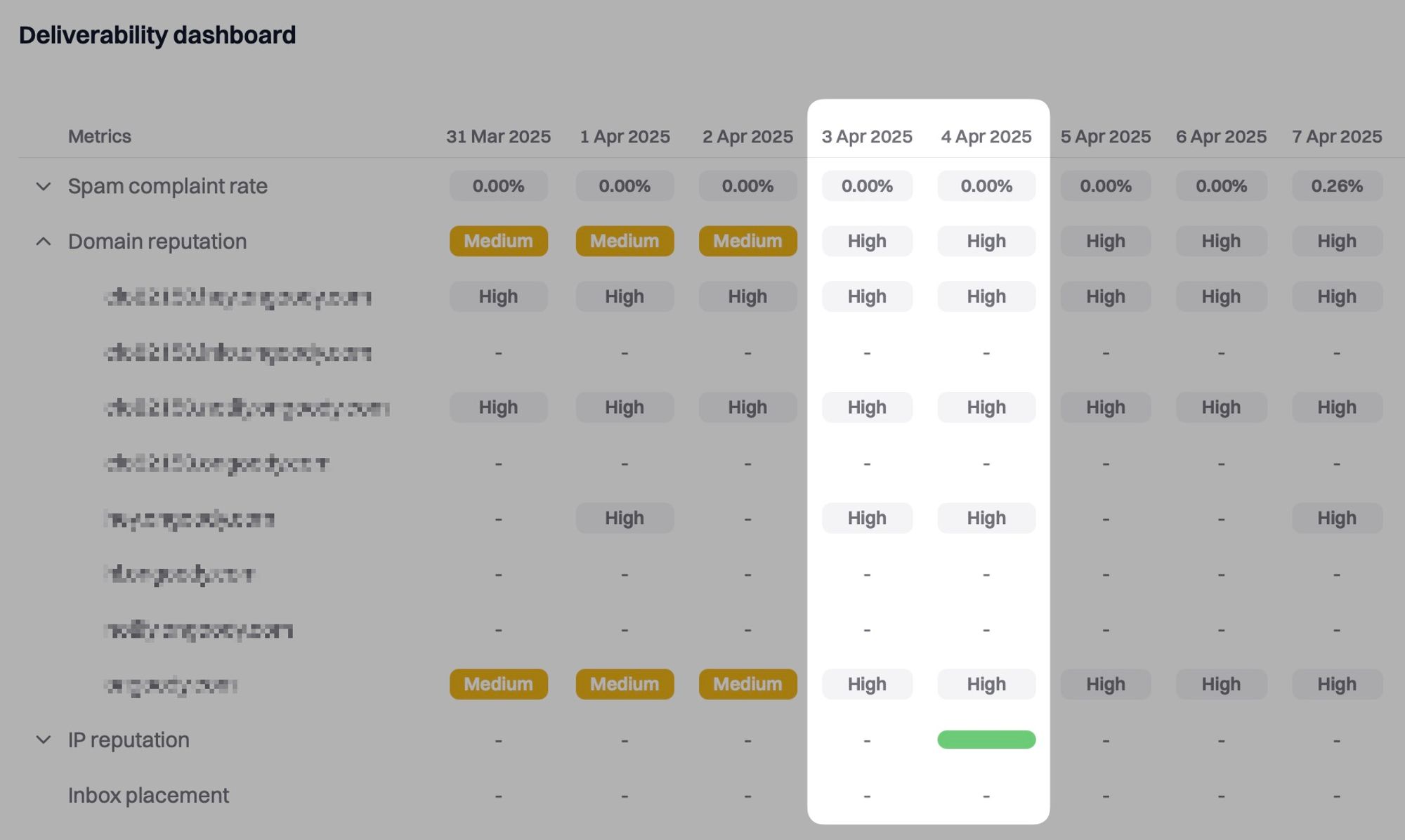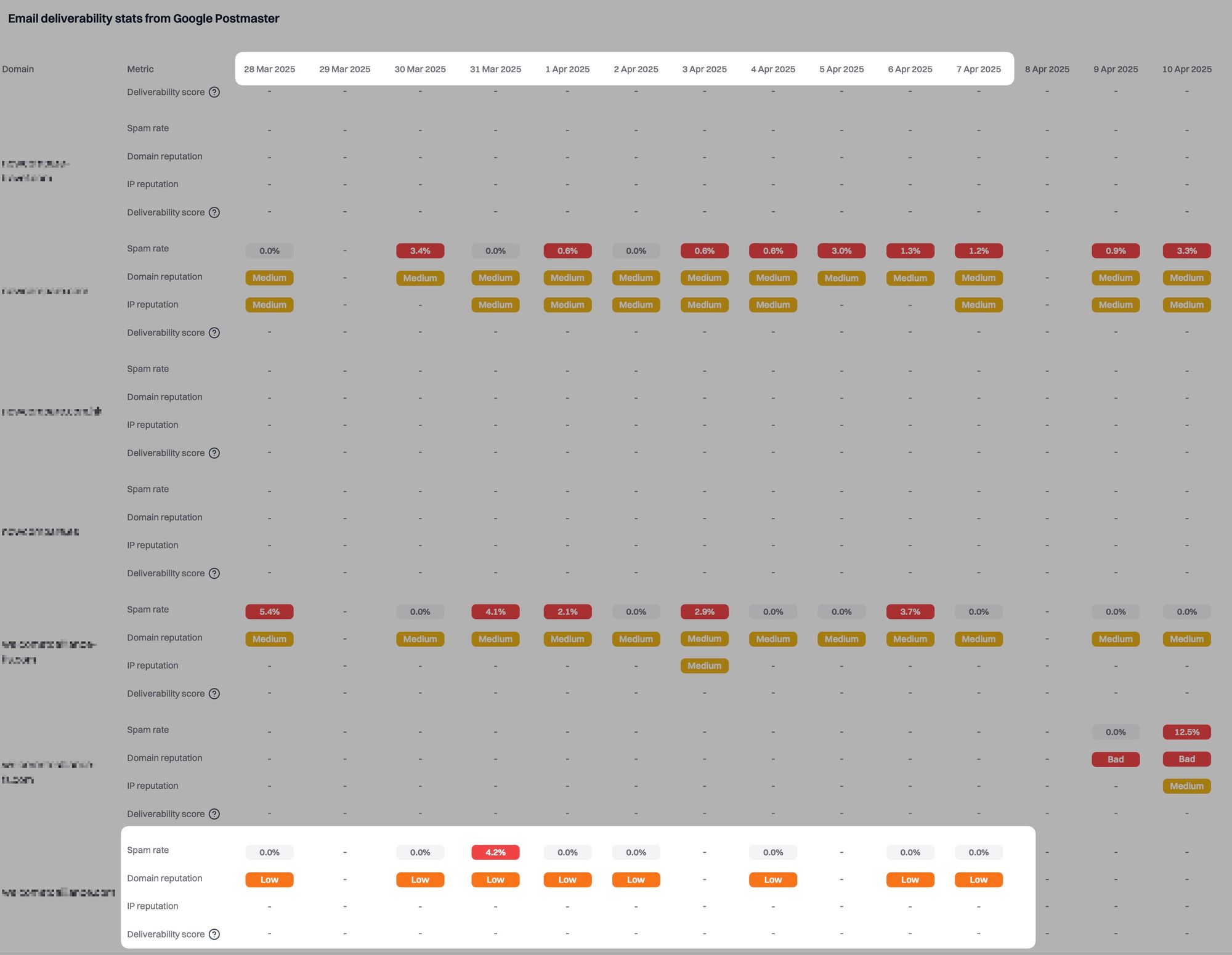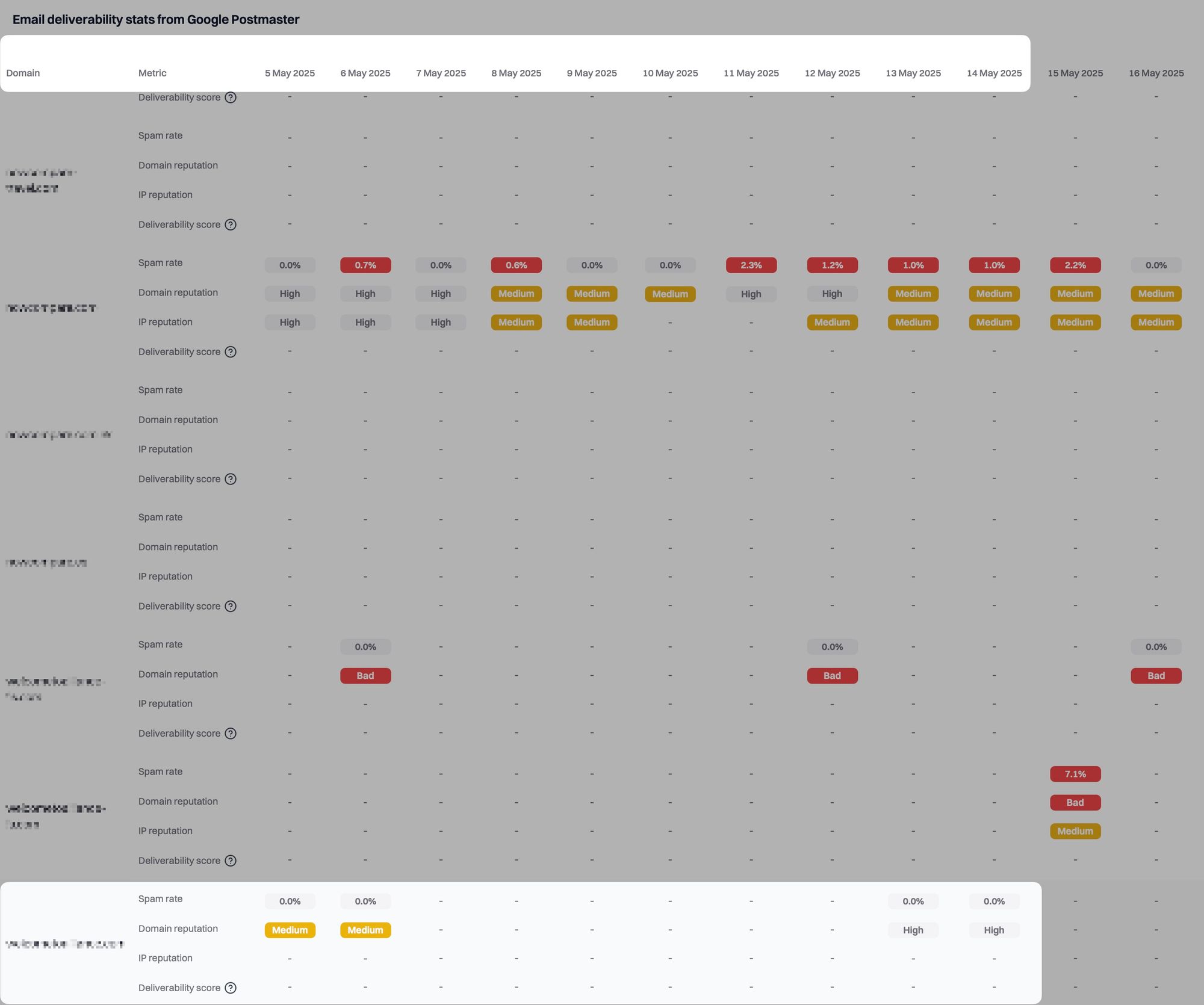"How long will this take?"
It's a question I hear almost daily as the founder of
Suped. When a company's domain reputation has taken a nosedive, and their emails are landing in spam, the uncertainty of the recovery timeline can be daunting. The honest, albeit frustrating, answer is: it depends.
But I'm not here to give you vague answers. I want to pull back the curtain and show you what the recovery process actually looks like, with real data from our platform. We'll explore the factors at play and look at two different scenarios where we helped businesses restore their domain reputation from "Bad" or "Low" to "High." One took a month, the other a little over two.
What is Domain Reputation and Why Does it Tank?
Before we dive into the recovery, let's quickly recap what domain reputation is. Think of it as a credit score for your email sending domain. Internet Service Providers (ISPs) like Gmail, Outlook, and Yahoo use it to determine whether your emails are trustworthy enough to land in the primary inbox.
A number of factors can tarnish this reputation:
- High Bounce Rates: Sending to invalid or non-existent email addresses is a major red flag.
- Spam Complaints: When recipients mark your emails as spam, it directly damages your reputation.
- Spam Traps: These are email addresses used by ISPs to identify spammers. Hitting even a few of these can be catastrophic.
- Lack of Authentication: Proper setup of SPF, DKIM, and DMARC is non-negotiable in today's email landscape.
- Low Engagement: If your open and click-through rates are consistently low, ISPs take it as a sign that your content isn't wanted.
Recovering from a poor reputation requires a systematic and patient approach. It's about demonstrating to ISPs over time that you're a legitimate sender who provides value to your recipients. For a deeper dive into the fundamentals, I recommend checking out this comprehensive guide on email deliverability from
ActiveCampaign.
Case Study 1: The One-Month Sprint to Recovery
Our first example is a B2B SaaS company that came to us with a "Bad" domain reputation. Their sales team's outreach emails were going straight to spam, crippling their lead generation efforts.

As you can see from the Suped dashboard, their journey from red to green was swift, taking just over four weeks. Here’s how we did it:

Week 1: The Hard Stop and Diagnosis
The first and most crucial step was to immediately halt all outbound email campaigns from the affected domain. Continuing to send with a poor reputation only digs a deeper hole.
We used this time to conduct a thorough audit. The culprits were a combination of an outdated email list with a high bounce rate (over 10%) and a lack of a proper warm-up strategy for their new sales reps.
Weeks 2-3: The Warm-Up and Re-engagement
With the diagnosis complete, we implemented a strict email warm-up schedule using Suped. We started by sending a low volume of emails (10-20 per day) to a highly engaged segment of their existing customer base – users who had recently logged in or contacted support. This ensured high open and reply rates, sending positive signals to the ISPs.
Simultaneously, their marketing team worked on a re-engagement campaign for their less active subscribers, asking them to confirm their interest in receiving emails. This helped to clean their list and identify their most loyal audience.
Week 4: The Gradual Ramp-Up and Monitoring
By the fourth week, their domain reputation had climbed into the "Medium" range. We began to gradually increase their sending volume, adding in new, verified leads. We closely monitored their deliverability rates and engagement metrics within Suped, making adjustments as needed. The result? A "High" reputation and a sales team that was back to hitting their targets.
Case Study 2: The Two-Month Marathon
Our second example is an e-commerce brand that had been a bit too aggressive with their promotional emails. Their reputation had been languishing in the "Low" to "Bad" territory for a while, and it took a more sustained effort to turn things around.

This recovery was more of a marathon than a sprint, taking a little over two months. Here’s a breakdown of their journey:

Month 1: Untangling the Web and Building a Foundation
The first month was dedicated to a complete overhaul of their email practices. Their issues were more complex, including:
- Inconsistent Sending Patterns: They would send massive blasts followed by long periods of silence, which ISPs view with suspicion.
- Poor List Segmentation: Everyone on their list received the same promotions, leading to low engagement and high unsubscribe rates.
- Content Issues: Their subject lines and email copy were often flagged as spammy.
We worked with them to create a consistent sending schedule, segment their audience based on purchase history and engagement, and refine their email content to be more value-driven. We also, of course, implemented a slow and steady email warm-up. For more on the intricacies of warming up a domain, this guide from
Spamhaus is an excellent resource.
Month 2: The Slow and Steady Climb
The second month was all about consistency. We continued the gradual increase in sending volume, focusing on their most engaged segments first. We A/B tested different subject lines and content formats to see what resonated best with their audience.
As you can see from the graph, there were a few minor dips along the way. This is normal. The key is to identify the cause of the dip – in this case, a slightly less engaged segment was introduced too quickly – and adjust your strategy accordingly. By the end of the second month, they had achieved a stable "High" reputation and, more importantly, a significant increase in email-driven revenue.
The Takeaway: Patience and Process are Paramount
So, how long does it take to recover your domain reputation? As you’ve seen, it can range from a month to several months. The key determinants are the severity of the initial damage and the diligence with which you execute a recovery plan.
The good news is that recovery is always possible. By following best practices, leveraging tools like
Suped to monitor your progress, and having a bit of patience, you can rebuild your domain's reputation and get back to landing in the inbox where you belong.







